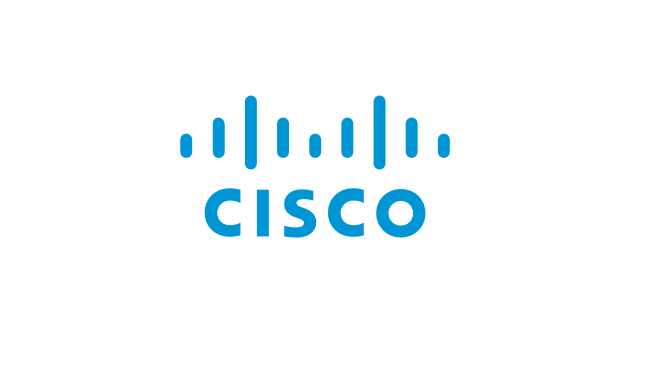-
Featured services
Think beyond the robots
The successful integration of AI and IoT in manufacturing will depend on effective change management, upskilling and rethinking business models.
Read the blog -
Services
View all services and productsLeverage our capabilities to accelerate your business transformation.
-
Services
Network Services
-
Services
Cloud
-
Services
Consulting
-
-
Services
Data and Artificial Intelligence
- AI and Intelligent Solutions
- Data/AI Strategy and Program
- Data Engineering and Platforms
- Data Governance and Management
- Data Visualization and Business Decision
- GenAI Consulting
- GenAI Platforms
- GenAI Industry Services
- GenAI Infrastructure Services
- GenAI Value Transformation
- View Data and Artificial Intelligence
-
Services
Technology Solutions
-
Services
Global Data Centers
-
Services
CX and Digital Products
-
Services
Application Services
-
Services
Sustainability Services
-
Services
Digital Workplace
-
Services
Business Process Services
-
Services
Generative AI
-
Services
Cybersecurity
-
Services
Enterprise Application Platforms

Accelerate outcomes with agentic AI
Optimize workflows and get results with NTT DATA's Smart AI AgentTM Ecosystem
Create your roadmap -
-
-
Insights
Recent Insights
-
The Future of Networking in 2025 and Beyond
-
Using the cloud to cut costs needs the right approach
When organizations focus on transformation, a move to the cloud can deliver cost savings – but they often need expert advice to help them along their journey
-
Make zero trust security work for your organization
Make zero trust security work for your organization across hybrid work environments.
-
-

Master your GenAI destiny
We’ll help you navigate the complexities and opportunities of GenAI.
Explore GenAI -
-
Master your GenAI destiny
We’ll help you navigate the complexities and opportunities of GenAI.
Explore GenAI -
Discover how we accelerate your business transformation
-
About us
CLIENT STORIES
-
Liantis
Over time, Liantis – an established HR company in Belgium – had built up data islands and isolated solutions as part of their legacy system.
-
Randstad
We ensured that Randstad’s migration to Genesys Cloud CX had no impact on availability, ensuring an exceptional user experience for clients and talent.
-
-
CLIENT STORIES
-
Liantis
Over time, Liantis – an established HR company in Belgium – had built up data islands and isolated solutions as part of their legacy system.
-
Randstad
We ensured that Randstad’s migration to Genesys Cloud CX had no impact on availability, ensuring an exceptional user experience for clients and talent.
-

Everest Group PEAK Matrix® Assessment
NTT DATA is a Leader and Star Performer in the Everest Group Sustainability Enablement Technology Services PEAK Matrix® Assessment 2024.
Get the Everest report -
- Careers
NTT’s dynamic business environment is underpinned by operational transformation
Fast-moving infrastructure modernization is driving the need for operational change. With this change comes the necessity of a robust software asset management strategy designed for infrastructure licensing. By establishing fit-for-purpose Enterprise Agreements with our partners and simplifying technology lifecycle management through the capabilities of our service offers, we can now benefit from enhanced visibility and control of our software-defined and legacy hardware assets.
Client Profile
NTT Ltd. is a leading IT infrastructure and services company serving 65% of the Fortune Global 500 and more than 75% of the Fortune Global 100 companies. We lay the foundation for organizations’ edge-to-cloud networking ecosystems, simplify the complexity of their workloads across multicloud environments, and innovate at the edge of their IT environments where networks, cloud and applications converge.
Vision
Operational transformation accelerates our journey to a cloud-ready infrastructure
One of the largest IT companies in the world, NTT Ltd., is accelerating infrastructure and operational change to support dynamic digital business transformation, bringing together 31 separate corporate entities amid challenging and unforeseen global conditions.
Cloud-first strategies driving change
All organizations have significant complexity, and complexity equals cost and potential risk. The key driver of change is our ambition to migrate our applications to the cloud and adopt secure, cloud-based business processes and applications. As part of this process, we wanted to radically simplify our application architecture landscape, decommission legacy processes and legacy systems, and move to a new, cloud-based data architecture. Therefore, we had to consider the most effective way to optimize our application portfolio for the biggest impact and to help improve our organization’s performance.
In the rapidly moving corporate environment organizations, including NTT, are executing cloud-first strategies. The focus on application migration is driving accelerated deployment of software-driven technologies within agile and highly available cloud-ready infrastructures.
Simplifying and consolidating lifecycle and financial management
With each separate company having had their own infrastructure and operational practices, the main priority for NTT’s internal IT team was to build an inventory of technology assets deployed across four continents and 31 operating companies. To address this complexity and take control of a vast licensing estate involving many thousands of multi-technology licensing agreements, it was vital to leverage our own expertise and innovation as well as commercial best practices for software asset management. By leveraging the capabilities of our Software-defined Infrastructure Services we’re building a lifecycle management model with the visibility and control to enable ongoing cost and operational improvement.
Embracing the opportunity for an optimized environment
The accelerated introduction of software-defined, cloud-managed technologies created an opportunity for in-house operational transformation focused on maximizing the potential and value of our investments. We, like most organizations, are working through the shift from hardware to software-defined infrastructure (SDI). This means we’re moving from buying physical assets to procuring and purchasing software-driven assets. As a result, our procurement models and practices have needed to change as we transition to new commercial models. We needed to build a new robust lifecycle model for software asset management with the aim of ensuring efficient governance and utilization while containing and, ideally, reducing cost and risk.
Traditional support services ensured asset availability, which is still important. But now, by auto discovering the assets in a multivendor infrastructure and using analytics from deep API-level integrations, we are now gaining the predictive insights and security notifications to reduce the risk of downtime while delivering the visibility and control for effective governance and lifecycle cost management.
Transformation
Moving from complexity to simplicity with a lifecycle management strategy
The journey to consolidating and simplifying the lifecycle management of our licensing started with a baseline assessment of our hardware and software assets. This exercise presented a huge opportunity to identify potential cost and operational efficiencies and then map out our own blueprint to achieve and sustain these benefits.
Gaining visibility
The number and complexity of licenses build up over time. Organizations often don’t have full visibility of their licensing estate, which causes potential compliance risk and inefficient utilization. When you bring 31 separate companies together, it’s quite a challenge to gain a clear view of the total number of licenses and hardware assets you have. With so many license types and vendor agreements there was an urgent need for consolidation and risk assessment. This is where strong relationships with our strategic vendor partners came in, helping us to track the inventory of what assets we had, where they were and the lifecycle status of hardware and software.
Moving to Enterprise Agreements
Once we established what licensing we had, we reconciled them against our service contracts and licensing contracts. The next step was to consolidate these across the global organization.
We used the information provided by our strategic vendor partners, starting with Cisco, to hold laser-focused conversations with them about structuring Enterprise Agreements that are fit for purpose and will allow us to grow and scale. This process allowed us to accurately establish our licensing requirements and the scope of our Enterprise Agreements.
Simplified license lifecycle management
The next step was gaining visibility and control of the cloud-managed infrastructure and ensuring consistent availability of our legacy hardware. Introducing NTT’s Software-defined Infrastructure Services will give us the consolidated analytical insights we need across multiple vendors and technologies for both hardware and software.
One of the key benefits of Software-defined Infrastructure Services is a Digital Wallet that provides a single digital experience allowing us to visualize entitlements. We will now be able to see how and where licensing is being consumed sorted by vendor, license type and technology, highlighting compliance and utilization status in addition to the insights to achieve lifecycle cost efficiencies and mitigate risk. Integration with ITSM and our financial systems will allow us to manage hardware and software inventory and provide the data we need for on-time purchasing and renewal decisions.
Accelerated technology adoption
Having completed the first phase of reviewing our Cisco licenses and moving to multi-technology Enterprise Agreements, we are currently working on completing a baseline discovery so we can then accelerate the integration of software-defined technologies across 250 global sites. We’re accelerating our application migration to cloud at the same time as modernizing our infrastructure, initially in partnership with Cisco, and will add new vendor partners as the project progresses. This will allow us to maintain the benefits we gain from our optimized operational model in step with infrastructure transformation.
Leveraging a next generation services platform
Software-defined Infrastructure Services are the evolution of our support services and leverage automation, machine learning and deep API-level integration with vendor technologies. Our services platform aggregates multiple data sources to provide a single source of insights into our licensing estate, associated SDI hardware and legacy assets. Telemetry integration with Cloud collectors and controllers allows us to enrich the data with AI/ML analytics and provide predictive insights on software risks, configuration and image compliance to comply with regulatory standards.
"Regardless of the complexity of the infrastructure, we need the visibility and control to assure continuity and high-quality user experiences throughout dynamic business change."
Results
Visibility to set up software for future success
Improved return on investment
The value gained from the consolidation of our licensing into multi-technology Enterprise Agreements, underpinned by the simplification of our operational and procurement practices, will make lifecycle management far more cost-effective and mitigate risk across our business. We now pay for software licensing based on consumption, rather than a term license purchased on an “as-needed” basis and can implement license changes more effectively, at a lower cost and in a shorter timeframe than before this modernization exercise.
The next phase of our journey is the introduction of Software-defined Infrastructure Services – a streamlined evolution of our Uptime support services. This will enable us to fully leverage the benefits of the shift to subscription software and Enterprise Agreements defining the future of our procurement and lifecycle management strategy initially Cisco and, in the near future, our other partners. Knowing exactly the status, inventory, compliance and utilization of our licensing estate will enable us to identify cost efficiencies and mitigate operational and financial risk.
Our business case projections estimate a return on investment of over 50% from the expected improvements for the next three years. Given the size and scope of our operations, this will make a real difference to our ability to invest to grow and drive innovation.
Simplified insights, improved availability
The shift to Enterprise Agreements allows us to simplify the management of our software assets. Software-defined Infrastructures Services are the evolution of our traditional hardware support services and with a single source of insights for multi-vendor hardware asset availability and licensing, we can benefit from streamlined and simplified operations across our infrastructure across software, associated and legacy hardware.
By the end of the project, we predict we will improve hardware and software availability (by solving cases faster) by more than 70%, which will again have a tremendous impact on our ability to resource new business initiatives and enable change.
Reduced cost and risk
Paying only for the utilized licenses allows NTT to right-size their spending. Viewing all the information through Digital Wallet reduces the time spent on tracking and managing existing a la carte multivendor licensing with differing lifecycles. Once the modernization process is complete, we will have the insights to easily keep track of both hardware and software assets to ensure business continuity and consistently high-quality user experiences, regardless of location or device. This infrastructure and operational transformation is projected to reduce the direct cost of implementing and configuring multivendor technologies by an estimated 50%.
Predictive modeling
Our service platform will allow us to do more than respond to problems as they arise; we will be able to predict possible incidents and security threats and resolve them before they affect user experience and continuity.
Speak to an expert


